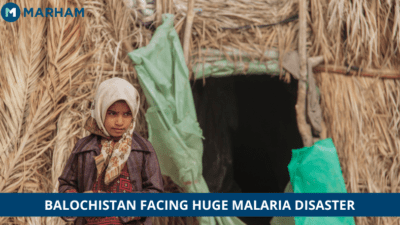According to sources, the number of cases of water-borne diseases like malaria is drastically rising in the flood-affected districts of Balochistan.
3,131 cases of malaria have reportedly been reported in five flood-affected Balochistan districts, including Suhbatpur, Jaffarabad, Nasirabad, Jhal Magsi, and Dera Bugti.
As per the data, 37,224 instances of malaria have been reported in the aforementioned Balochistan regions during the course of the last 14 days. In the province, the current positive rate for vector-borne illness is 49 percent.
In Balochistan, out of a total of 37,224 cases, there are 6,237 cases involving children under the age of five and 31,223 cases involving individuals over the age of five, according to the sources.
Separately, 12 flood-hit regions have been designated as “sensitive” for malaria, according to sources.
According to sources, susceptible areas in the wake of the malaria disease epidemic include Khairpur, Sanghar, Shaheed Benazirabad, Naushehro Feroze, Badin, Mirpurkhas, Qambar, Jacobabad, Jamshoro, Larkana, Shikarpur, and Dadu.
In Sindh, where floodwaters caused a health emergency, thousands of people were forced to flee and are now suffering from a variety of ailments, mostly water-borne.
The province’s health service reports that 6,206 new cases of diarrhea have been reported in the flood-affected areas. On the previous day, 6,762 patients reported having skin conditions. If you have malaria, you can arrange an appointment with a doctor by clicking here.

